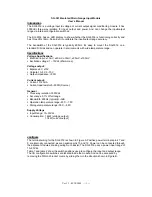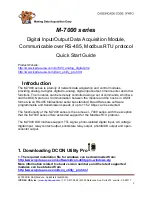
Copyright and
Trademarks
Copyright © Ansul, 2002. All rights reserved.
Printed in the United States of America.
Information in this document is subject to change without notice. No part of this document
may be reproduced or transmitted in any form or by any means, electronic or mechanical, for
any purpose, without the express written consent of Ansul.
Cautions and Warnings
SYSTEM REACCEPTANCE TEST AFTER SOFTWARE CHANGES - To ensure proper
system operation, this product must be tested in accordance with NFPA72, Chapter 7 after any
programming operation or change in site-specific software. Reacceptance testing is required
after any change, addition or deletion of system components, or after any modification, repair
or adjustment to system hardware or wiring.
All components, circuits, system operations, or software functions known to be affected by a
change must be 100% tested. In addition, to ensure that other operations are not inadvertently
affected, at least 10% of initiating devices that are not directly affected by the change, up to a
maximum of 50 devices, must also be tested and proper system operation verified.
READ AND SAVE THESE INSTRUCTIONS. Follow the instructions in the installation,
operating and programming manuals. These instructions must be followed to avoid damage to
the control panel and associated equipment. Fire Alarm Control Panel (FACP) operation and
reliability depend upon proper installation.
DO NOT INSTALL ANY ANSUL PRODUCT THAT APPEARS DAMAGED. Upon
unpacking your Ansul product, inspect the contents of the carton for shipping damage. If
damage is apparent, immediately file a claim with the carrier and notify Ansul.
ELECTRICAL HAZARD - Disconnect electrical power when making any internal
adjustments or repairs. Servicing should be performed by qualified Ansul representatives.
RADIO FREQUENCY ENERGY - This equipment generates, uses, and can radiate radio fre-
quency energy and if not installed and used in accordance with the instruction manual, may
cause interference to radio communications. It has been tested and found to comply with the
limits for a Class A computing device pursuant to Subpart J of Part 15 of FCC Rules, which are
designed to provide reasonable protection against such interference when operated in a com-
mercial environment. Operation of this equipment in a residential area may cause interference
in which case the user at his own expense will be required to take whatever measures may be
required to correct the interference.




































